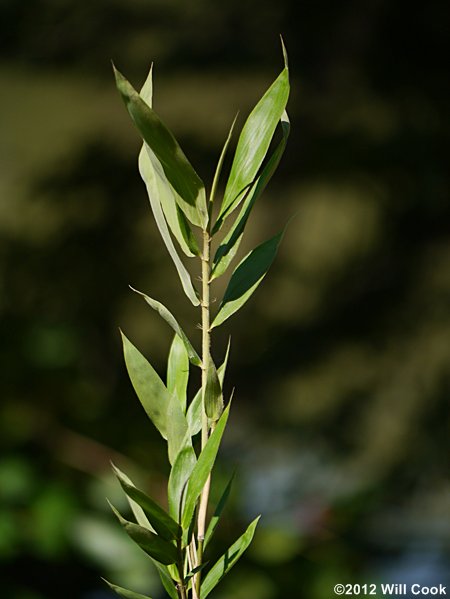
This colonial woody grass is found most often in moist bottomlands in the forest understory. One of three native bamboo species, Giant Cane is difficult to separate from the smaller Switch Cane (A. tecta), with which it is sometimes lumped. Switch Cane is generally less than 2 meters tall, while Giant Cane can reach 7 meters or more. A third species, the recently described Hill Cane (Arundinaria appalachiana), is of short stature and generally grows in drier slopes of the southwestern corner of NC. All species can form extensive dense stands, known as canebrakes, which are used for cover by wildlife, such as the Canebrake Rattlesnake.
Madison Co., NC 7/28/2012.
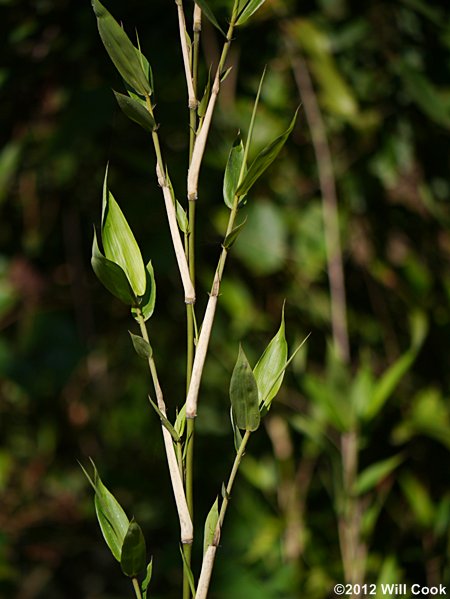
Madison Co., NC 7/28/2012.

Harnett Co., NC 8/18/05.
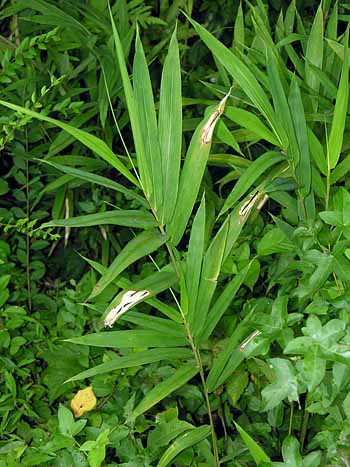
Cane is the host plant for several uncommon butterfly species: Southern Pearly Eye, Creole Pearly Eye, Lace-winged Roadside-Skipper, Reversed Roadside-Skipper, and Carolina Roadside-Skipper.
Harnett Co., NC 8/18/05.
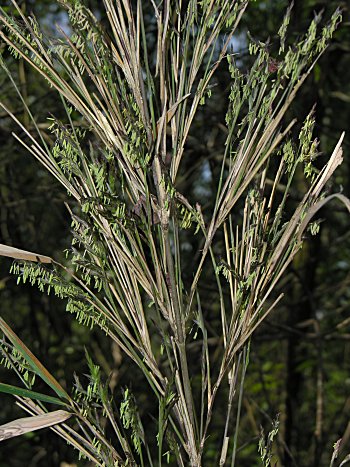
I was amazed to find this stand of Giant Cane in full bloom at Bladen Lakes State Forest. Giant Cane rarely flowers, by some accounts every 40 years or so. Switch Cane is reported to flower as frequently as every 3 years, in response to fire.
Bladen Co., NC 3/25/07.

Bladen Co., NC 3/25/07.
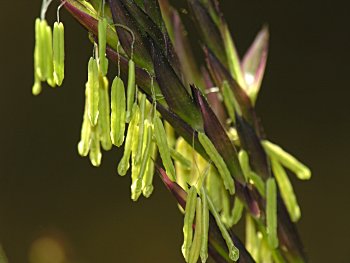
Bladen Co., NC 3/25/07.
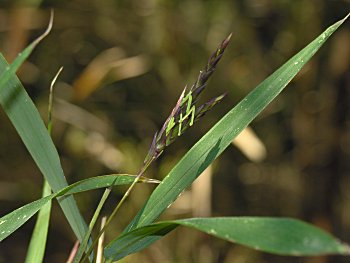
Bladen Co., NC 3/25/07.
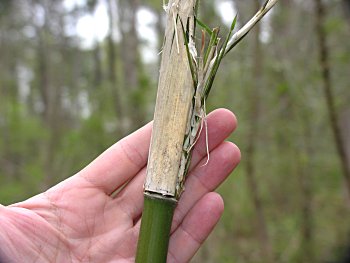
Large stem, with hand for scale. The canes are traditionally used for fishing poles.
Durham Co., NC 4/1/07.
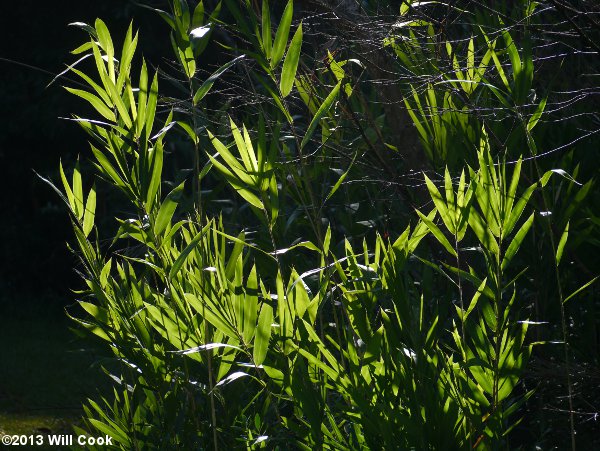
Columbus Co., NC 9/29/2013.